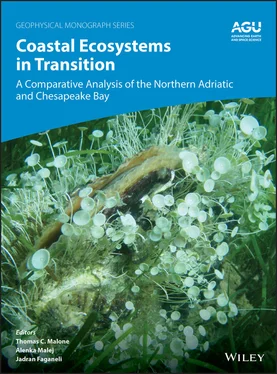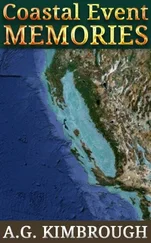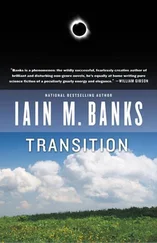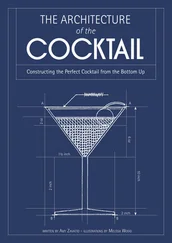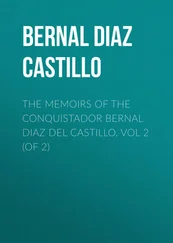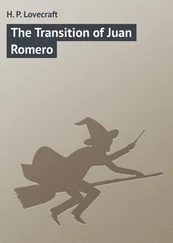James PiersonHorn point Laboratory, University of Maryland Center for Environmental Science, Cambridge, MD 21613, USA
Lorie StaverHorn Point Laboratory, University of Maryland Center for Environmental Science, Cambridge, MD, 21613, USA
J. Court StevensonHorn Point Laboratory, University of Maryland Center for Environmental Science, Cambridge, MD, 21613,USA
Mario TamburriChesapeake Biological Laboratory, University of Maryland Center for Environmental Science, Solomons, MD, 20688, USA
Jeremy M. TestaChesapeake Biological Laboratory, University of Maryland Center for Environmental Science, Solomons, MD, 20688, USA
Tinkara TintaMarine Biology Station Piran, National Institute of Biology, Piran, Slovenia; and Department of Limnology and Biological Oceanography, University of Vienna, Vienna, Austria
Valentina TirelliNational Institute of Oceanography and Applied Geophysics - OGS, Trieste, Italy
Cecilia TottiDepartment of Life and Environmental Sciences, Università Politecnica delle Marche, Ancona, Italy
Valentina TurkMarine Biology Station Piran, National Institute of Biology, Piran, Slovenia
Cinzia De VittorSection of Physical, Chemical, and Biological Oceanography, National Institute of Oceanography and Experimental Geophysics, Trieste, Italy
Martin VodopivecMarine Biology Station Piran, National Institute of Biology, Piran, Slovenia
Michael J. WilbergChesapeake Biological Laboratory, University of Maryland Center for Environmental Science, Solomons MD, 20688, USA
Ryan J. WoodlandChesapeake Biological Laboratory, University of Maryland Center for Environmental Science, Solomons, MD, 20688, USA
Qian ZhangUniversity of Maryland Center for Environmental Science, USEPA Chesapeake Bay Program, Annapolis, MD, USA
A series of workshops was hosted in the 1990s by the Marine Biology Station Piran of the National Institute of Biology (Slovenia), the Centre for Marine Research of the Ruđer Bošković Institute Rovinj (Croatia), and the Horn Point Laboratory of the University of Maryland Center for Environmental Science (USA). Their purpose was to advance our understanding of how coastal ecosystems are responding to cultural eutrophication, coastal development, and fishing pressure through a comparative analysis of the Northern Adriatic Sea and Chesapeake Bay, two river‐dominated systems with urbanized watersheds that support extensive industrial agriculture.
These workshops led to the 1999 publication of Ecosystems at the Land–Sea Margin: Watershed to the Coastal Sea as part of the AGU Estuarine and Coastal Sciences Series. The comparative analysis was undertaken in order to improve our understanding of how coastal ecosystems are responding to the pressures of human expansion. The focus was on impacts of local anthropogenic pressures that are occurring globally (coastal development, habitat loss, nutrient pollution, and fisheries) and was based on research conducted during the 1980s and 1990s.
Revisiting these two ecosystems two decades later provides an opportunity to assess changes in anthropogenic pressures (including climate‐driven changes) that have occurred in the past two decades and to inform ecosystem‐based approaches to managing multiple anthropogenic pressures on coastal marine ecosystem services. In addition, we hope that this publication will foster international collaboration and information exchange on the ecology and value of coastal ecosystems in the Anthropocene.
The chapters that follow include updates on current anthropogenic pressures with an emphasis on the effects of nutrient enrichment and climate change on the extent and condition of critical coastal habitats, patterns of stratification and circulation, food‐web dynamics from phytoplankton to fish, nutrient cycling, water quality, and harmful algal events. A common theme running throughout is the causes and consequences of interannual variability and secular trends in annual cycles and means.
Publication of this book commemorates the 50th anniversary of Slovenia’s Marine Biology Station Piran, the only institution for marine research and monitoring of seawater quality in Slovenia. We gratefully acknowledge financial support from the following: Long Term Ecological Research Network in Italy and Slovenia (LTER‐Italy, LTER‐Slovenia), Slovenian Research Agency, Croatian Ministry of the Science, Environmental Agency of Slovenia, Croatian Meteorological and Hydrological Service, the European Environmental Agency, the District Po River Basin Authority, the Regional Environmental Protection Agencies of Emilia Romagna, European Commission, US Environmental Protection Agency, US Geological Survey, US National Oceanic and Atmospheric Administration, and US National Science Foundation.
Thomas C. Malone
University of Maryland Center for Environmental Science, Horn Point Laboratory, USA
Alenka Malej
National Institute of Biology, Marine Biology Station, Slovenia
Jadran Faganeli
National Institute of Biology, Marine Biology Station, Slovenia
1 Introduction: Coastal Ecosystem Services at Risk
Thomas C. Malone1, Alenka Malej2, and Jadran Faganeli2
1 Horn Point Laboratory, University of Maryland Center for Environmental Science, Cambridge, MD, USA
2 Marine Biology Station Piran, National Institute of Biology, Piran, Slovenia
Sustainable development depends on the provision of multiple marine ecosystem services. A comparative analysis of the northern Adriatic Sea and Chesapeake Bay conducted 20 years ago focused on ecosystem characterization and the impacts of local pressures (nutrient enrichment, fishing, and coastal development). To gain a better understanding of how these pressures are impacting sustainable development in the context of global climate change, an update of this analysis is presented in this book, with an emphasis on the pressures of nutrient enrichment and climate‐driven changes in ocean temperature, acidification, and wet precipitation.
1.1. WHY COASTAL ECOSYSTEMS AND WHY THE NORTHERN ADRIATIC SEA AND CHESAPEAKE BAY?
Coastal ecosystems produce 80% of the world’s annual marine fish catch (Pauly et al., 2008) and provide an estimated $12 trillion annually in coastal ecosystem services (Barbier et al., 2011; Costanza et al., 2017; Koch et al., 2009; Solé & Ariza, 2019; Worm et al., 2006) upon which sustainable development depends (Malone et al., 2014; UNEP, 2006; Wood et al., 2018). Four major categories of ecosystem services have been recognized (MEA, 2005):
1 Supporting services that underpin the capacity of coastal ecosystems, e.g., presence of critical habitats and biodiversity, primary production of organic nutrients and oxygen, and nutrient cycling. For our purposes, critical habitats include both pelagic habitats of the water column and biologically engineered benthic habitats (coral and oyster reefs, seagrass meadows, kelp forests, salt marshes and mangrove forests).
2 Regulating services, e.g., climate control, prevention of coastal erosion, limiting the extent and impacts of coastal flooding, and maintenance of water quality.
3 Provisioning services, e.g., supplies of food, raw materials, and medicinal resources.
4 Cultural services, e.g., recreational, aesthetic, and spiritual benefits.
Anthropogenic pressures that impact the capacity of marine ecosystems to provide services can be divided into two broad categories:
Читать дальше
